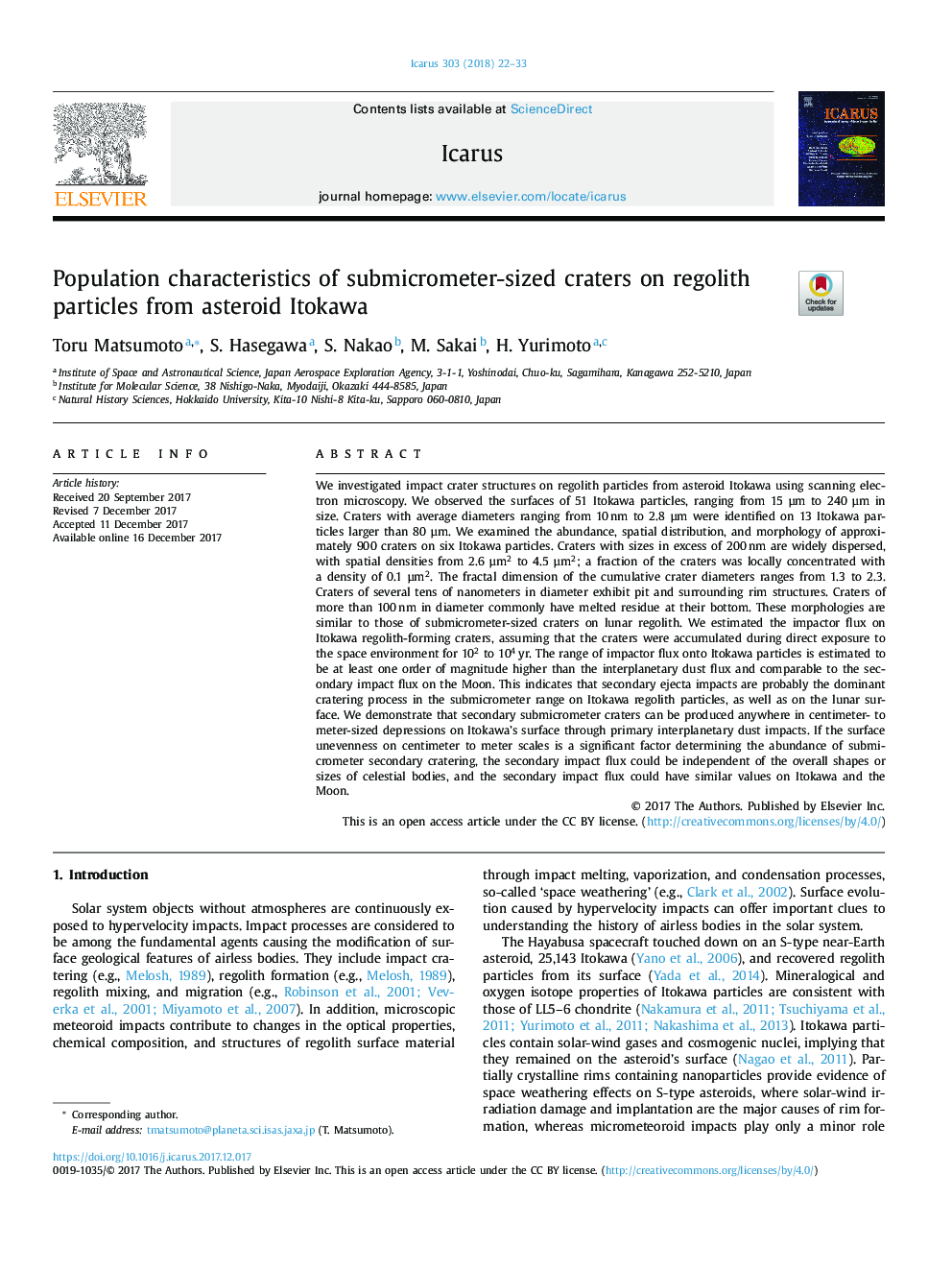| Article ID | Journal | Published Year | Pages | File Type |
|---|---|---|---|---|
| 8134399 | Icarus | 2018 | 12 Pages |
Abstract
We investigated impact crater structures on regolith particles from asteroid Itokawa using scanning electron microscopy. We observed the surfaces of 51 Itokawa particles, ranging from 15 µm to 240 µm in size. Craters with average diameters ranging from 10â¯nm to 2.8 µm were identified on 13 Itokawa particles larger than 80 µm. We examined the abundance, spatial distribution, and morphology of approximately 900 craters on six Itokawa particles. Craters with sizes in excess of 200â¯nm are widely dispersed, with spatial densities from 2.6 µm2 to 4.5 µm2; a fraction of the craters was locally concentrated with a density of 0.1 µm2. The fractal dimension of the cumulative crater diameters ranges from 1.3 to 2.3. Craters of several tens of nanometers in diameter exhibit pit and surrounding rim structures. Craters of more than 100â¯nm in diameter commonly have melted residue at their bottom. These morphologies are similar to those of submicrometer-sized craters on lunar regolith. We estimated the impactor flux on Itokawa regolith-forming craters, assuming that the craters were accumulated during direct exposure to the space environment for 102 to 104â¯yr. The range of impactor flux onto Itokawa particles is estimated to be at least one order of magnitude higher than the interplanetary dust flux and comparable to the secondary impact flux on the Moon. This indicates that secondary ejecta impacts are probably the dominant cratering process in the submicrometer range on Itokawa regolith particles, as well as on the lunar surface. We demonstrate that secondary submicrometer craters can be produced anywhere in centimeter- to meter-sized depressions on Itokawa's surface through primary interplanetary dust impacts. If the surface unevenness on centimeter to meter scales is a significant factor determining the abundance of submicrometer secondary cratering, the secondary impact flux could be independent of the overall shapes or sizes of celestial bodies, and the secondary impact flux could have similar values on Itokawa and the Moon.
Related Topics
Physical Sciences and Engineering
Earth and Planetary Sciences
Space and Planetary Science
Authors
Toru Matsumoto, S. Hasegawa, S. Nakao, M. Sakai, H. Yurimoto,
